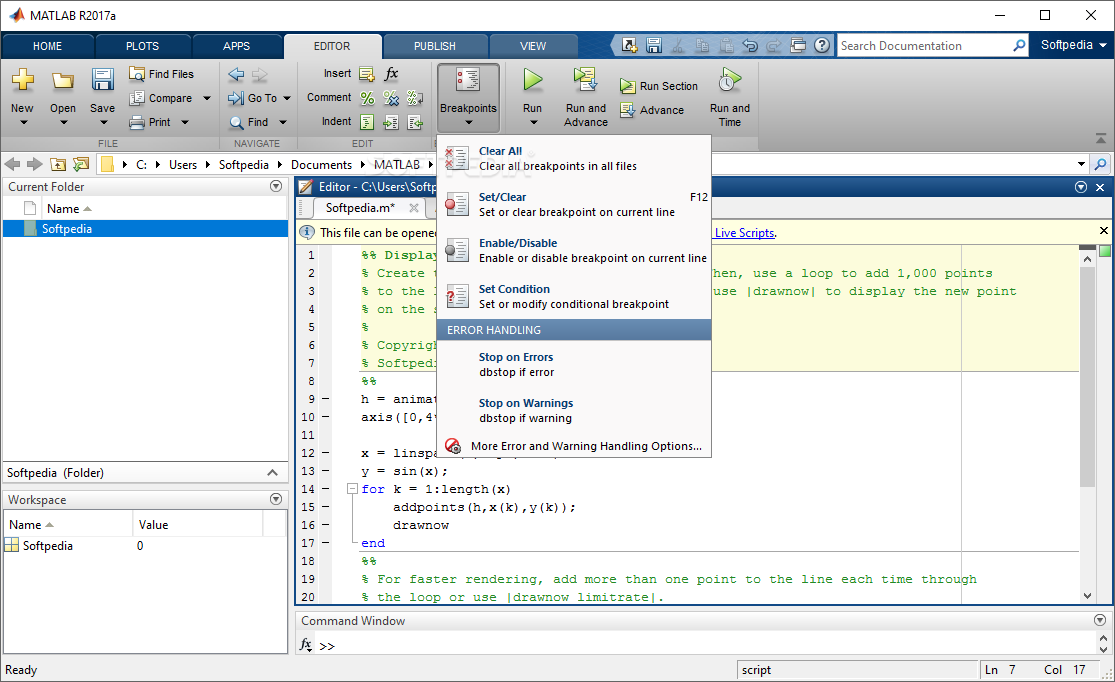

We can see in the above output that the vector is added to the 3D matrix, but we also had to add zeros to make the size equal.

Now, the given vector will become a matrix with extra zeros, which we can easily add or append at the end of the 3D matrix.įor example, let’s create a 3D matrix with 2 rows, 2 columns, and 2 pages and then add the given vector using the abovementioned method. To solve this problem, we can create a vector of zeros using the zeros() function, which will have the same size as the third dimension or page, and then we can replace the first array of the zeros matrix with the given vector. If we have a 3D matrix with more than one row, the size of the third dimension or page will be different from the size of the given vector. In the above example, we only have a single row on each page, so we have not encountered any errors. For successful concatenation, the size of the dimension that we passed inside the cat() function and the vector size should be the same. MyVector = Īs we can see in the above output, the 3D matrix has 3 pages after the concatenation, and the last page contains the input vector. The cat() function will create another page in the 3D matrix to store the given vector.įor example, let’s create and append a vector at the end of the above 3D matrix or array using the cat() function. In our case, we want to add the vector at the end of the 3D matrix, which means we want to add the vector after the last page. The cat() function has three input arguments in which the first argument is the dimension number, the second argument is the 3D matrix, and the third argument is the vector or matrix that we want to append to the 3D matrix. If we want to append or add another vector at the end of the above 3D matrix or array, we can use the cat() function, which concatenates two matrices according to the given dimension. If we want to get an element from the 3D matrix, we have to give its location like the row, column, and page number. In the above example, we have a 3D matrix with 2 pages, and each page will have a 2D matrix of 1 row and 2 columns shown in the output. MATLAB shows a 3D array or matrix with respect to the third dimension. If we want to append a vector at the end of a 3D matrix, the vector’s size should be the same as the size of each page or 3rd dimension present in the 3D matrix.įor example, let’s create a 3D matrix or array with 1 row, 2 columns, and 2 pages. In a 3D matrix or array, each element is placed on a specific location, row, column, and page number, and we can get and replace an element using its location.įor example, the first element in a 3D matrix or array will be placed on the location (1,1,1), which is also shown in the above diagram. In a 2D matrix or array, each element is placed on a specific location or row and column number, and we can get and replace an element using its location.

A simple 3D matrix or array is shown below. In a 3D matrix or array, we have 3 dimensions in which the first two dimensions are the same as the 2D matrix or array, and the third dimension is called pages or sheets. In a 2D matrix or array, we have two dimensions in which the first dimension is called the row, and the second dimension is called the column. Append Vector to 3D Matrix in MATLABĪ 3D matrix or array is different from a 2D matrix or array. Python Dictionaries Access Items Change Items Add Items Remove Items Loop Dictionaries Copy Dictionaries Nested Dictionaries Dictionary Methods Dictionary Exercise Python If.Else Python While Loops Python For Loops Python Functions Python Lambda Python Arrays Python Classes/Objects Python Inheritance Python Iterators Python Scope Python Modules Python Dates Python Math Python JSON Python RegEx Python PIP Python Try.This tutorial will discuss appending a vector to a 3D matrix using the cat() function in MATLAB.


 0 kommentar(er)
0 kommentar(er)
